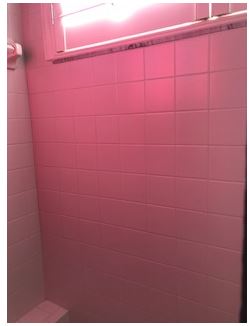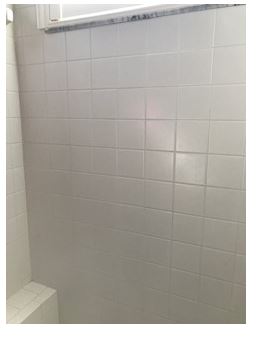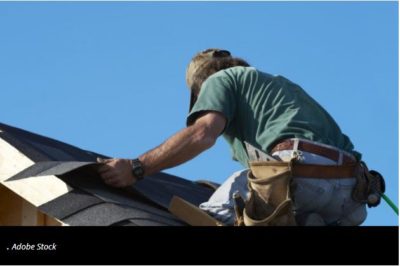Winter is almost here, meaning the year’s coldest temperatures aren’t far off. But homeowners can take advantage of recently enacted tax breaks to help boost their home’s efficiency, thereby trapping more heat inside and better defending against winter’s chill — and saving them money in the process.
The Energy Efficient Home Improvement tax credit, offered by the Inflation Reduction Act, can help defray homeowners’ costs on such projects — such as installing energy-efficient insulation, windows, doors and electric heat pumps — while also likely reducing the size of future heating bills, experts said. It’s worth a maximum $3,200 a year.
The average American spends $2,000 on energy bills each year, and $200 to $400 may be “going to waste” from drafts, air leaks around openings and outdated heating and cooling systems, according to the U.S. Department of Energy.
Home heating accounts for 45% of the average person’s energy use, and water heating for another 18%, the agency said.
Home efficiency upgrades can also reduce people’s planet-warming greenhouse gas emissions, at a time when climate change is already fueling more extreme and financially costly weather events.
How the tax break works (more…)

Photo by Blue Bird from Pexels
If you own a home, chances are you’ll make improvements at some point. Whether you’re looking to increase your property value or make your space better suited for your needs, there are many reasons you should follow through with these updates.
However, knowing where to start can be challenging. What renovation has the biggest impact on my property value? What upgrade is best suited for my family’s needs? Answering these questions can help point you in the right direction. But to help you find your starting point, we’ve listed a few popular home upgrades that can take your property to the next level. (more…)
9 small home improvement projects that achieve amazing ROIs and really pack a punch.
1. Decluttering and cleaning
When you go to sell your home, depersonalizing it goes a long to show home buyers a blank slate in which they can imagine living their lives—rather than a lived-in home where you’ve lived yours. Decluttering and deep cleaning is a great place to start to remove the lived-in look. With low costs and huge visual impacts, deep cleaning and decluttering are recommended the most by real estate agents. According to HomeLight’s research, 98% of agents recommend decluttering and 91% recommend deep cleaning to prepare for market.
2. Landscaping and curb appeal updates
(more…)
Changes are coming to the flood insurance policy sector taking effect October 1st on new policies and April 1, 2022 on any outstanding renewal policies. I will write further as more details are revealed but these are the highlights from the FEMA Risk Rating 2.0 announcement:
1. Flood zones and Elevation Certificates will no longer be a rating factor (Flood zones will still be present for mortgage purposes)
2. Elevation Certificates will no longer be needed to determine rate
3. No more preferred rate tables for X,B,C Flood zones
4. Flood Vents (2 openings on 2 walls on lowest level) will no longer provide significant savings
5. Machinery on ground floor will impact rate (ex:a/c, water heater, washer/dryers)
6. Grandfathering: (more…)
When is the lowest-cost insurer not the lowest-cost insurer? When another company actually charges less because you bundled or installed security or did something else.
NEW YORK – The price of homeowners’ insurance is on the rise, and many owners may be looking for ways to reduce their high premiums. While discounts can vary greatly based on location, size, and age of the house, some credits may be available that could reduce some homeowners’ premiums by as much as thousands of dollars per year, The Wall Street Journal reports.
The average premium for a homeowner’s insurance policy increased 3.1% to $1,249 in 2018, the latest year for which data is available. Luxury homes tend to be much more costly to insure than standard homes since they’re larger and have more decorative features within.
Here are some ways homeowners may be able to save on their homeowners’ insurance costs: (more…)
Hurricanes. Heat waves. Earthquakes. Tornadoes. Today’s headlines are awash in extreme weather, and whether you blame climate change or just plain bad luck, the simple truth is that the damage from these disasters is impossible to ignore.
Realtor.com® teamed up with HarrisX to conduct a poll of 3,026 adults on their extreme weather concerns and homeowners insurance know-how—and the results suggest that many Americans may be more vulnerable than we think.
Here are some of the key highlights: (more…)
Today’s market problems – a shortage of affordable housing, historically tight inventory of homes for sale and rising prices – weren’t caused by the latest pandemic-caused economic slowdown. It goes back to the Great Recession.
Experts say the U.S. housing market was already being roiled by forces fueling the current housing-price explosion even before the pandemic.
Matthew Murphy at New York University’s Furman Center for Real Estate & Urban Policy said supply shortages were evident heading into the pandemic, adding that “the context here to this current housing moment is that we were still recovering from the 2008-2009 foreclosure crisis.”
Meanwhile, the National Association of Realtors® has been pointing to an “underbuilding gap” of between 5.5 and 6.8 million housing units since 2001. (more…)

Photo by Halfpoint via Shutterstock
When it comes to conserving energy, homeowners wanting to go green often spare no expense. Here are a few ways to upgrade your home without lightening your wallet. (more…)
Pink bathrooms became fashionable in the 1950s because pink was Mamie Eisenhower’s favorite color. At one time it was estimated that there were 5 million pink bathrooms in this country, but they faded almost as fast as they arrived. Pink was swapped for woods and neutrals in the ’60s and the retro oranges and greens of the ’70s. The world simply fell out of love with pink.
Today, there is a resurging interest in the pink bathroom—thanks to the revival of mid-century design and millennials’ love affair with all things retro. An intact pink bathroom is now more of an intriguing design challenge than a renovation project, plus it’s a fun selling point for homeowners and renters alike.
Maybe, but a pink bathroom is not something I would choose.
It was a surprise therefore when, earlier this week, I went into my bathroom and to be confronted with this:

But shortly thereafter that wall looked like this:

The culprit? A red towel reflecting the morning sun.
Phew.
Andrew Oliver
Sales Associate | Market Analyst | DomainRealty.com
REALTOR®
Naples, Bonita Springs and Fort Myers
Andrew.Oliver@DomainRealtySales.com
m. 617.834.8205
www.AndrewOliverRealtor.com
www.OliverReportsFL.com
Market Analyst | Team Harborside | teamharborside.com
Sagan Harborside Sotheby’s International Realty
One Essex Street | Marblehead, MA 01945
www.OliverReportsMA.com
Andrew.Oliver@SothebysRealty.com
Sotheby’s International Realty® is a registered trademark licensed to Sotheby’s International Realty Affiliates LLC. Each Office Is Independently Owned and Operated
If you can ignore the ads some of these SoGoodly 31 Life hacks are really quite useful.
Here are my favourites: (more…)
A very helpful article from Realtor.com How to move safely during coronavirus.
Here are the headlines:
Checklist: Before you move
-Make sure moving is allowed in your area or building
-Choose car travel over air travel
-Carefully research your movers
-Decluttering? Call ahead if you plan to donate
-Plan ahead if you need to set up new internet or cable service
-Use new cardboard boxes you pack yourself
-Stock up on cleaning supplies for you and your movers
Checklist: On moving day
-Don’t involve more people than necessary
-Time your move carefully
-Disinfect all points of contact
Checklist: After the move
-Wipe down your moving boxes and furniture
-Canceling or changing your move if you’re sick
Andrew Oliver
REALTOR®
Sagan Harborside Sotheby’s International Realty
One Essex Street | Marblehead, MA 01945
m 617.834.8205
www.OliverReports.com
Andrew.Oliver@SothebysRealty.com
Sotheby’s International Realty® is a registered trademark licensed to Sotheby’s International Realty Affiliates LLC. Each Office Is Independently Owned and Operated
Tips from HGTV’s The Stagers
Top 5 Dos
Spruce up your curb appeal. Potential buyers judge your home before they even enter it. Make this first impression count. Plant flowers, mow the lawn, put out a welcome mat and make small repairs that you have been putting off.
Clean, clean, clean. This simple tip is essential. Dust, vacuum, clean the windows and mop the floors. Make sure there are no odd odors floating around or major stains on the carpet or furniture. Do like your mother said and make your bed.
Declutter. Get rid of any superfluous items that detract from the rooms. Hide figurines; throw out or recycle junk mail, newspapers and magazines; file disheveled papers; and put clothes, shoes and the like out of sight.
Neutralize. Potential buyers need to imagine themselves living in your home. Make it easy for them by removing all personal items such as family pictures and/or religious statues. Also, get rid of any loud paint colors, offensive wall coverings or in-your-face accessories.
Remove all big clunky furniture. Oversize couches, chairs or coffee tables have to go. If you cannot replace them with smaller pieces, get rid of as much as you can — less is more.
Don’t take it personally. As soon as you decide to make the commitment to sell your home, you need to think of it as a product, one that you want to sell fast and for top dollar. Don’t take buyers’ remarks personally. Instead, think of it as free advice on how to make your product live up to its highest potential. Emotionally detach yourself.
Don’t do major renovations. Finishes and fixtures that you see as beautiful may not suit every buyer’s tastes. It is best to limit the amount of time and investment you make on renovations to the essentials — replace old flooring, tackle small repairs, paint, change outdated fixtures. Save your renovation energy and dollars for your new home.
The furniture in this room is too large and there’s too much of it. Instead of replacing the pieces, it’s a good idea to consider rearranging or even removing some of them.
Don’t think the house will sell itself. The real estate market is a game. You need to make your home the most appealing product on the block. Declutter, clean, do small repairs, repaint and, in general, make it feel fresh and welcoming.
Don’t run out and purchase all new furniture. Chances are the furniture you have is not the reason your space is not selling. You may just have too much of it in one area. Or perhaps it needs to be cleaned or just neutralized with a simple throw. Remove before you completely redo.
Don’t be afraid to ask for help. Call in a professional stager, whether they just spend a few hours giving you some helpful tips or they come in to completely redecorate your entire space. It is money well spent and will eventually end up back in your pocket when you sell your home for top dollar.
Andrew Oliver
Market Analyst | Team Harborside | teamharborside.com
REALTOR®
Sagan Harborside Sotheby’s International Realty
One Essex Street | Marblehead, MA 01945
m 617.834.8205
www.OliverReports.com
www.TeamHarborside.com
Andrew.Oliver@SothebysRealty.com
Sotheby’s International Realty® is a registered trademark licensed to Sotheby’s International Realty Affiliates LLC. Each Office Is Independently Owned and Operated
Remember “The Money Pit”? You know, the 1986 movie with Tom Hanks and Shelley Long, who purchase a supposed bargain of a mansion, which proceeds to collapse under their feet? Well, it turns out that the real-life house from the film has officially lived up to its reputation, selling for a huge loss, according to this Realtor.com article:The Money Pit

The house was purchased by a couple in 2002 for $2.15 million, but they were in for a surprise. “We didn’t realize how bad it was. The house was falling apart when you went from room to room. We definitely could have done the sequel.”
Undismayed, the new owners set out on an expensive renovation – $5.9 million, taking their total investment to $8 million, before listing the house in 2014 for $12.5 million.
That would have been a reasonable return on the $8 million investment – had it sold. But it didn’t. Until recently. For $3.5 million, or a $4.5 million loss. Ouch.OUCH!
According to a local broker: “’The Money Pit’ house selling at a loss has to do with both the size and styling of the house. Buyers are looking for more casual homes and aren’t as interested in large, formal properties. While the house is certainly beautiful, it’s just not the look that many buyers are shopping for.”
And that story has been repeated elsewhere.
“What a beautiful, old-style property,”commented one buyer recently about a 19th Century house. Before going on to buy a modern property; modern both in terms of design – more open concept, fewer formal rooms – and amenities – a smart home, sleek and shiny.
Perhaps the lesson from the Money Pit sequel is that just because you fall in love with an old house and are happy to invest millions in it does not mean that others will share your taste. Or if they do, most likely they are of an age where they are sellers, not buyers of such properties.
Caveat emptor applies to old properties.
Andrew Oliver
Market Analyst | Team Harborside | teamharborside.com
REALTOR®
Sagan Harborside Sotheby’s International Realty
One Essex Street | Marblehead, MA 01945
m 617.834.8205
www.OliverReports.com
www.TeamHarborside.com
Andrew.Oliver@SothebysRealty.com
Sotheby’s International Realty® is a registered trademark licensed to Sotheby’s International Realty Affiliates LLC. Each Office Is Independently Owned and Operated
Yes one of the great existential questions of life.
Covering old shingles may be cheaper but roofing experts, quoted in boston.com’s Roof shingles pros and cons say “It is never advisable to shingle over existing shingles.”

Andrew Oliver
Market Analyst | Team Harborside | teamharborside.com
REALTOR®
Sagan Harborside Sotheby’s International Realty
One Essex Street | Marblehead, MA 01945
m 617.834.8205
www.OliverReports.com
www.TeamHarborside.com
Andrew.Oliver@SothebysRealty.com
Sotheby’s International Realty® is a registered trademark licensed to Sotheby’s International Realty Affiliates LLC. Each Office Is Independently Owned and Operated
The Boston Globe recently published Sometimes solar panels are not a good fit for your home , exploring the benefits – and challenges – of solar panels.
The article included this comment:
Matt Dolan, a broker with Sagan Harborside Sotheby’s International Realty in Marblehead who has panels on his home, said some developers and homeowners got caught up chasing green building certifications and haven’t been able to recoup their investments.
“People got out too far over their skis with solar and thought anytime you made a green addition to a house that you’d instantly win, and it’s just not the case. A lot of people don’t actually care that much,’’ Dolan said. He pointed to a home that was renovated to LEED Platinum standards a decade ago, complete with solar and geothermal energy. “The reality is it’s a $2 million home that we’re marketing for $1.4 million, because no one is willing to pay an ultra premium just because it has the green credentials.’’
I wrote Solar panels: are they right for you? back in 2015 and followed up in 2016 with Solar roof tiles 2.0 – a major improvement. Alas, like a number of Elon Musk’s promises, solar roof tiles remain just that – a promise. In 2018 a CNBC investigation found only 12 houses with Tesla’s solar roof tiles and one of those cost the homeowner $100,000. Nice idea – shame about the price.
Andrew Oliver
Market Analyst | Team Harborside | teamharborside.com
REALTOR®
Sagan Harborside Sotheby’s International Realty
One Essex Street | Marblehead, MA 01945
m 617.834.8205
www.OliverReports.com
www.TeamHarborside.com
Andrew.Oliver@SothebysRealty.com
Sotheby’s International Realty® is a registered trademark licensed to Sotheby’s International Realty Affiliates LLC. Each Office Is Independently Owned and Operated









Recent Comments